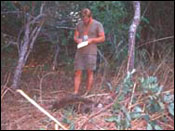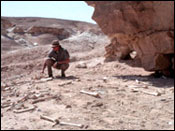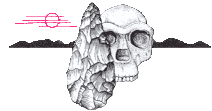Zooarchaeological Investigations
How do animal remains become buried and preserved in the fossil record, and what do fossil animal bones at archaeological sites tell us about early hominid behaviors? Fossil animal bones have a persistent presence at early Stone Age archaeological sites, but it has not always been clear what agencies were responsible for collecting and modifying these remains. Were early hominids hunters or scavengers? Did they collect and process animal remains at archaeological sites, or were other animals, such as hyenas or large cats, the principal agents of accumulation and modification? These are important questions to resolve in order to understand early hominid behavior and adaptation, and they demand a profound understanding of how humans and other agents collect and modify bones.
Stone Age Institute researchers Travis Pickering, Jason Heaton, Charles Egeland, Nicholas Toth, and Kathy Schick have pursued these questions in a multitude of ways, including the analysis of animal bones from prehistoric sites, as well as actualistic and experimental studies of the effects of human and carnivore agents on bone assemblages. Examples of such studies include ethnoarchaeological research, experiments processing animals (that had died of natural causes) with stone tools, analysis of bone accumulations made by modern hyenas, and in-depth analyses of tooth-marks and cut-marks as well as bone fracture patterns.

Travis Pickering collecting data from a carcass during a taphonomic field study

A scanning electron microscope image of stone tool cutmarks on a one million year old fossil bone.


